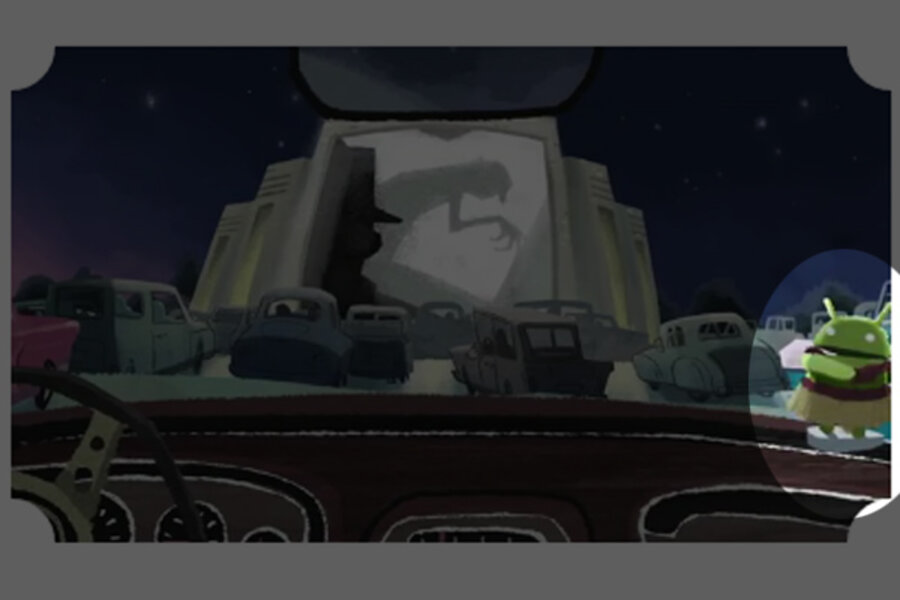Have you met the Android mascot? Google created this little, green bot to hype its smart phone operating system. Perched atop the dashboard of a 1950s car, the Android robot stands mid-hula, wearing a grass skirt complete with a coconut bra. It’s a unique play on the popularity of hula girl bobble heads, which still appear on car dashboards years after drive-in theaters have disappeared.
The Android mascot is used to wearing all sorts of costumes. When Google released Android’s 4.0 Ice Cream Sandwich, the lime green color was replaced with – you guessed it – an ice cream sandwich motif: chocolate on the outside, vanilla ice cream underneath. Google also released pins for Mobile World Congress 2011 that displayed the mascot wearing a blue polka dot dress and a red suit.
But there's a second Easter egg hidden in this shot: the most famous sound effect in Hollywood. Behind the green robot, on the drive-in movie itself, a typical Hitchcockian scene plays. Dressed in a suit, a man opens a door to a dark office, goes to flick on the light switch and sees a shadow of an ominous figure with outstretched fingers. The final shot shows the man’s wide, frightened eyes, reminiscent of facial close-ups in movies such as “Shadow of a Doubt” (1943) and “Psycho” (1960).
The character lets out a distinctive howl. It's the "Wilhelm scream," a particular sound clips that has appeared in countless movies. The exact same scream has been used in Star Wars, Indiana Jones, Lord of the Rings, and many, many other films.
As the Monitor reported recently, "the Wilhelm scream has appeared in Gremlins 2 (when a victim of the titular monsters falls to his death); Batman Returns (when a clown gets a bat-fist in the face); the direct-to-video Little Mermaid 2 (when a crew member on a doomed ship leaps overboard); and Lord of the Rings: The Two Towers (during the battle for Helm's Deep)."
Horror movies were popular at drive-ins, including classics ranging from “The Blob” (1958) and “The Curse of Frankenstein” (1957). Although “horror movies, so popular in the thirties and early forties, had seen their star fall by the fifties,” according to Yahoo, “not many such films made the ‘A’ list. They were fodder for the drive-in theaters and Saturday matinees.”
Next up: Google's secret code.







